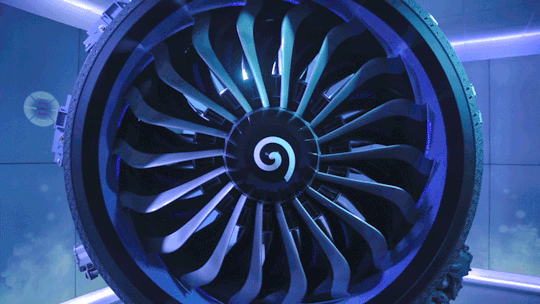Titanium 6-4
6Al-4V Grade 5 Titanium

Material Data Sheet
Titanium 6Al-4V alloy is an alpha + beta alloy, containing 6% aluminum and 4% vanadium. It is designed for a good balance of characteristics, including strength, ductility, fracture toughness, high-temperature service, creep resistance, weldability, workability and thermal processing (higher strength is easily obtained through treatment).
Ti 6-4 is, therefore, used for many airframe and engine parts and is commonly referred to as the “workhorse” of Titanium alloys, accounting for as much as 50% of the world’s total Titanium usage. There are a great many applications for Titanium 6Al-4V in aircraft, where high reliability is required. General structural materials such as bolts and seat rails are made from Ti 6-4. In engines, the alloy is used for fan blades and cases in the intake section where temperatures are relatively low.
Its usability lies in its many benefits. Ti 6Al-4V may be heat-treated to increase its strength. It can be used in welded construction at service temperatures of up to 600° F. Titanium 6Al-4V alloy offers its high strength at a lightweight, useful affordability, and high corrosion resistance. This makes it an ideal choice for use across may platforms including aerospace, medical, marine and chemical processing industries.
| Element | Content(%) |
|---|---|
| Titanium, Ti | 90.00 |
| Aluminum, Al | 6.00 |
| Vanadium, V | 4.00 |
| Carbon, C | ≤ 0.10 |
| Oxygen, O | ≤ 0.20 |
| Nitrogen, N | ≤ 0.05 |
| Hydrogen, H | ≤ 0.0125 |
| Iron, Fe | ≤ 0.3% |
| Properties | Metric | Imperial |
|---|---|---|
| Density | 4.43 g/cc | 0.16 lbs/in3 |
| Melting Point | 1604-1660°C | 2920-3020°F |
| Shear Modulus | 43988 MPa | 6.38 x 106 psi |
| Modulus of Elasticity | 113763 MPa | 20885 psi |
| Specific Heat | 0.5263 Joules/g°C | 0.126 BTU/lb-°F |
| Mean Coefficient of Thermal Expansion | 8.6 µm/m-°C | 4.78 µin/in-°F |
| Thermal Conductivity | 6.7 W/m-K | 46.5 BTU-in/hr-ft²-°F |
| Properties | Metric | Imperial |
|---|---|---|
| Tensile Strength, Ultimate | ≥895 MPa | ≥130000 psi |
| Tensile Strength, Yield | ≥828 MPa | ≥120000 psi |
| Elongation at Break | ≥10% | ≥10% |
| Modulus of Elasticity | 95.0 – 111 GPa | 13800 – 16100 ksi |
| Shear Modulus | 41.0 – 45.0 GPa | 5950 – 6530 ksi |

- Fasteners
- Aircraft turbines
- Engine components
- Aerospace fasteners
- Marine applications
- Sporting goods
- Pumps and valves
- Orthopedic implants
- Surgical instruments
- Aircraft structural components
- High-performance automotive parts
Key Words: Titanium 6-4, Ti 6-4, Titanium 6Al-4V, ti 6aL-4v, GRADE 5,UNS R56400; ASTM Grade 5 titanium; UNS R56401 (ELI); Ti6Al4V, biomaterials, biomedical implants, biocompatibility
Titanium 6Al-4V alloy is an alpha+beta alloy, containing 6% aluminum and 4% vanadium. It is designed for a good balance of characteristics, including strength, ductility, fracture toughness, high-temperature service, creep resistance, weldability, workability and thermal processing (higher strength is easily obtained through treatment).
Titanium 6Al-4V is, therefore, used for many airframe and engine parts and is commonly referred to as the “workhorse” of Titanium alloys, accounting for as much as 50% of the world’s total Titanium usage. There are a great many applications for Titanium 6Al-4V in aircraft, where high reliability is required. General structural materials such as bolts and seat rails are made from Ti 6Al-4V. In engines, the alloy is used for fan blades and cases in the intake section where temperatures are relatively low.
Its usability lies in its many benefits. Ti 6Al-4V may be heat-treated to increase its strength. It can be used in welded construction at service temperatures of up to 600° F. Titanium 6Al-4V alloy offers its high strength at a lightweight, useful affordability, and high corrosion resistance. This makes it an ideal choice for use across may platforms including aerospace, medical, marine and chemical processing industries.
Key Words: Titanium 6-4, Ti 6-4, Titanium 6Al-4V, ti 6aL-4v, GRADE 5,UNS R56400; ASTM Grade 5 titanium; UNS R56401 (ELI); Ti6Al4V, biomaterials, biomedical implants, biocompatibility



